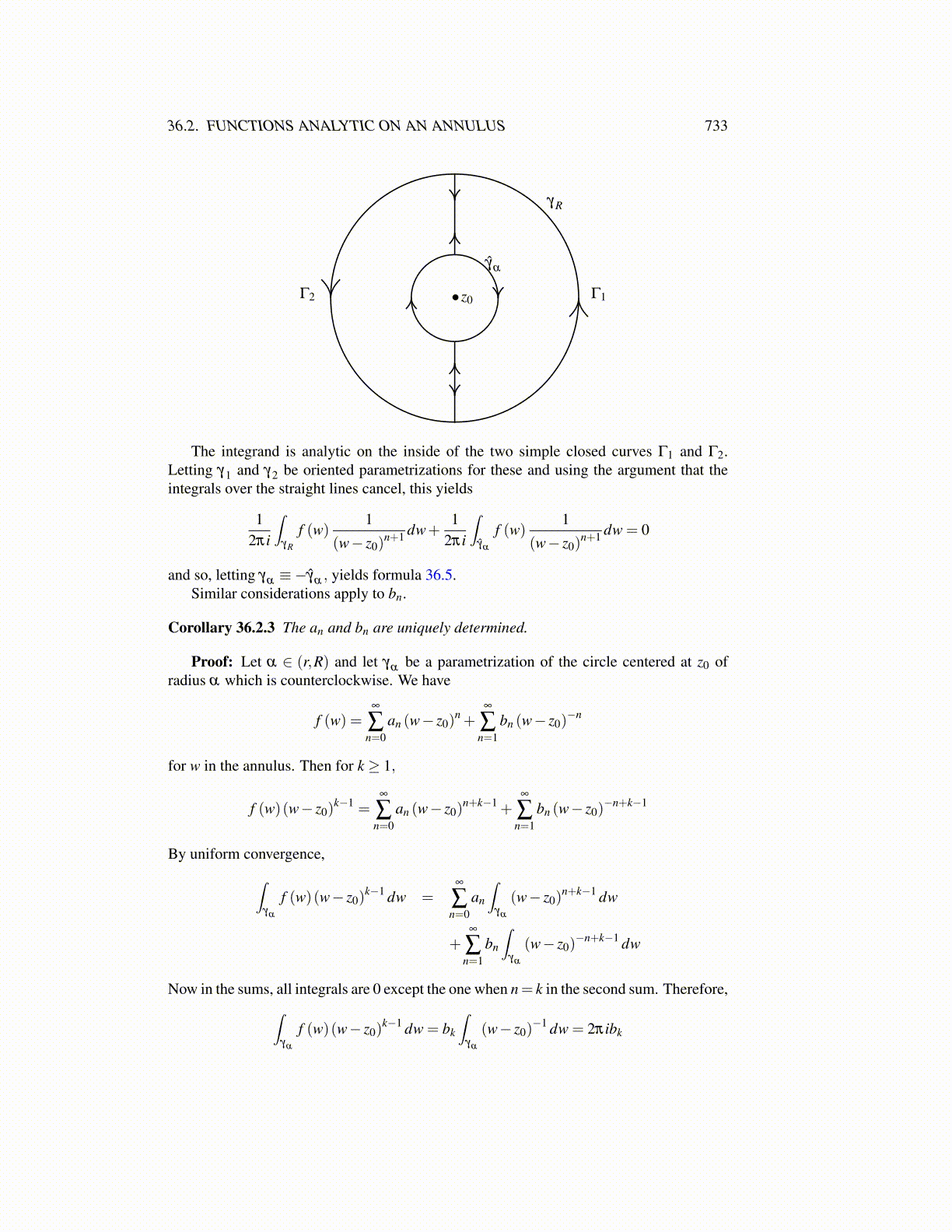
36.2. FUNCTIONS ANALYTIC ON AN ANNULUS 733
γR
γ̂α
Γ1Γ2 •z0
The integrand is analytic on the inside of the two simple closed curves Γ1 and Γ2.Letting γ1 and γ2 be oriented parametrizations for these and using the argument that theintegrals over the straight lines cancel, this yields
12πi
∫γR
f (w)1
(w− z0)n+1 dw+
12πi
∫γ̂α
f (w)1
(w− z0)n+1 dw = 0
and so, letting γα ≡−γ̂α , yields formula 36.5.Similar considerations apply to bn.
Corollary 36.2.3 The an and bn are uniquely determined.
Proof: Let α ∈ (r,R) and let γα be a parametrization of the circle centered at z0 ofradius α which is counterclockwise. We have
f (w) =∞
∑n=0
an (w− z0)n +
∞
∑n=1
bn (w− z0)−n
for w in the annulus. Then for k ≥ 1,
f (w)(w− z0)k−1 =
∞
∑n=0
an (w− z0)n+k−1 +
∞
∑n=1
bn (w− z0)−n+k−1
By uniform convergence,∫γα
f (w)(w− z0)k−1 dw =
∞
∑n=0
an
∫γα
(w− z0)n+k−1 dw
+∞
∑n=1
bn
∫γα
(w− z0)−n+k−1 dw
Now in the sums, all integrals are 0 except the one when n= k in the second sum. Therefore,∫γα
f (w)(w− z0)k−1 dw = bk
∫γα
(w− z0)−1 dw = 2πibk